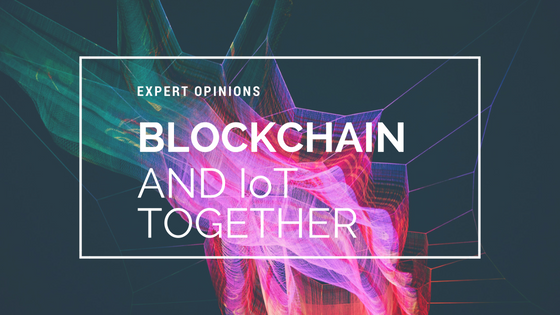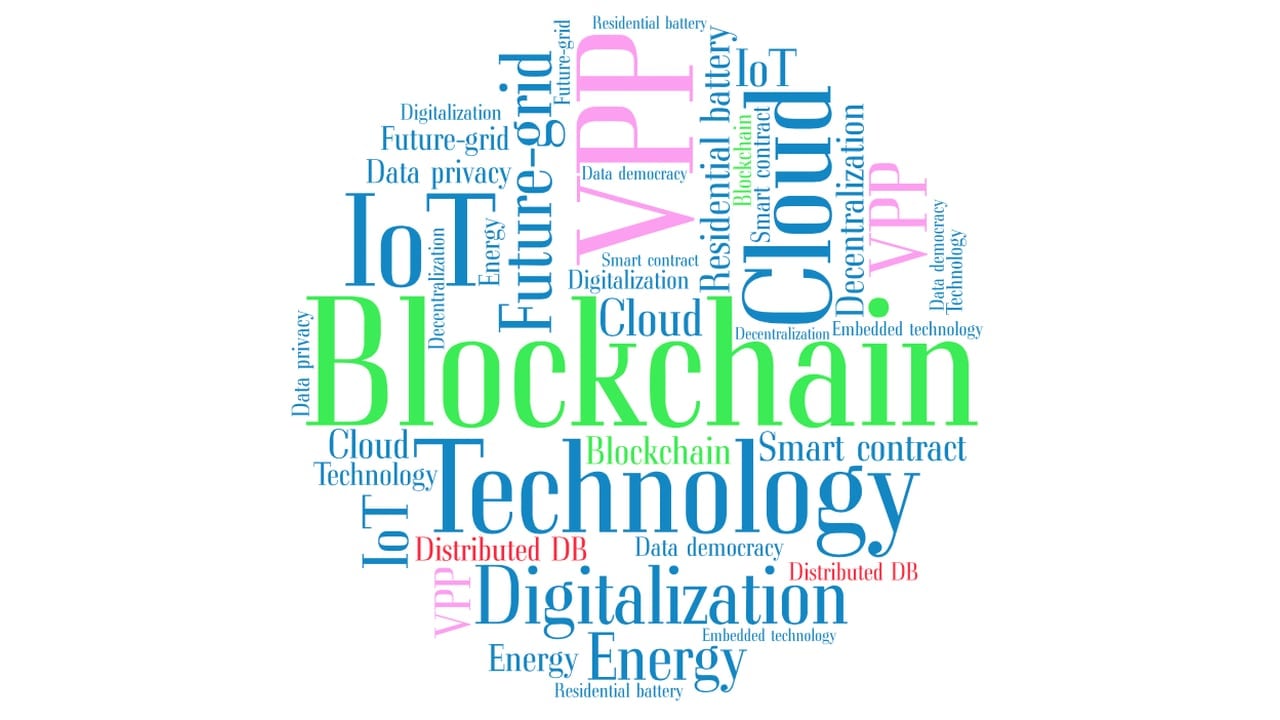5 Applications of Blockchain in Business and Economy
The blockchain is a digital ledger of transactions that records all the exchanges of cryptocurrencies in a decentralized manner. Blockchain allows...

The Internet of Things (IoT) and Blockchain are two different techs that are set to revolutionize the wider aspects of the business. But the idea of putting them together can result in something even greater. A Gartner study reveals that Blockchain will add up to $3.1 trillion business value by 2030 and IoT on the similar lines will grow to $457 billion by 2020.

Combining IoT and Blockchain lactually make a lot of sense as IoT is best described as the rapid increase of data collecting devices into our work and personal lives while Blockchain being encrypted allows the creation of tamper-proof, real-time records. But what do the experts have to offer. Let us dig deeper.
Interested in Blockchain? Get your copy on the latest trends, innovations and developments.
As the world moves towards greater automation, even greater efficiencies may be realized by integrating these various automated devices into smart systems. For example, reliable self-driving trucks are on the horizon but in order to fully realize their potential, we’ll need automated refueling stations, automated tool booths along highways, automated freight handling and warehousing systems, and so on. So, while IoT largely takes care of the question of how these different devices will communicate and coordinate, what’s often overlooked is the necessity for them to be able to pay each other. To use our previous example, for a truly efficient system to emerge, the truck needs to pay for gas and tolls as well as receive payment for delivering cargo. Having a human monitoring the truck’s progress and making credit card payments for gas and tolls would somewhat defeat the purpose.
There are two major advantages to using blockchain technology for IoT payments. The first is that cryptocurrencies are far more programmable than traditional payment methods, given that cryptos are themselves code-based.
The second is that it’s possible to make microtransactions via cryptocurrencies. Whereas the minimum viable payment which can be performed using a credit card is around $5 due to processing fees, using something like Bitcoin’s Lightning Network, it’s economically-feasible to send a millionth of a cent, or even less. This allows for all kinds of new business models to fuel the development of the IoT. As for the technical challenges to developing such systems, I believe they’re all things which will yield in time to the tremendous profit incentives driving innovation in this realm… The real challenge though will be how society deals with the unemployment issues likely to result from greater automation.
-Ofir Biegel, Owner: 99bitcoins.com, @ofirbeigel
IoT and blockchains have decentralization in common. They work across multiple kinds of devices across the world. This leads to IoT applications being decentralized in nature, meaning every device has a copy of the application that interacts with the network individually. This model works really well for blockchains since they are designed to work for applications that perform transactions and atomic interactions.
One of the biggest short-comings with IoT has to be security. So far, IoT devices have security mostly via obscurity. Most of the devices tend to have completely open access as long as you are connected to the same WiFi network. They broadcast using SSDP and are able to be manipulated via it as well ( especially looking at you via TVs ). Some talk to each other over Bluetooth which has a little bit more security in place but still is not entirely secure. With more devices being added, it opens more avenues to be attacked and hackers can get access to an abundance of devices and data. Blockchains and smart contracts can potentially mitigate some of the issues here by creating audit trails and tracking history of individual items and packages.
Blockchain can also have a real-world impact on trust building and cost-effectiveness across IoT networks, especially when it comes to inter-device communication. One of the largest potential use cases is DRM - which is pretty much the most natural use of blockchain in this space. The larger challenge is perhaps getting the ecosystem to talk to each other. There are so many devices out there that there needs to be a consortium that defining the protocols and APIs to interact with one another.
-Arun Kalaiselvan, CTO: Blockdaemon, @lOOneydOOdle
IoT potentially impacts any business process (i.e., transportation, retail, anything). However, as Zia would note, “The term IoT itself is as useless as any internet. The true value is in sensor-enabled data and the business process that allows you to do things to make decisions that you couldn’t do before. What are the use cases within the sensor-enabled data process can you deploy blockchain tech, or can be powered by blockchain tech that enables you to reduce the costs and enhance revenue? What are use cases where blockchain actually makes sense to do that?”
The Blockchain “would allow you to actually have one piece of machine charge another machine fractions of a cent every time it does something instead of just selling a piece of machinery. The only way to do that is through distributed ledgers - payment mechanisms through blockchain.” The benefits of “machine to machine payments” micro-payments through machines would be extraordinary for a number of industries - industrial goods, oil & gas, healthcare, retail, and many others.
-Zia Yusuf, Senior Partner, and Managing Director: BCG, @ZiaYusuf
4. Cost Efficient Data Management:
Blockchains or other types of distributed systems have a unique potential to provide the backbone for the scaling of IoT devices in the next few years. With the ability of a blockchain to hold hyper current, immutable data, many IoT developers are hopeful that it could provide a cost-efficient mechanism to manage the onslaught of data that would be generated by their device networks. Of course, distributed systems are still being field tested for structural security, but their promise is no secret.
In order for IoT systems to serve the end-customer needs while also scaling appropriately, the data must be able to be collected and trusted with utmost assurance. Blockchains provide a vital key to developers looking to produce systems of IoT devices because they allow for theoretically limitless scale while ensuring that trust.
While Blockchains might be ripe with potential for those looking to explore IoT networks, their consensus mechanisms, such as “proof-of-work” (PoW), often place financial burdens on their own users, such as high transaction fees, which can be cost-prohibitive to those looking to develop arrays of devices. However, not all blockchains necessitate the use of value to secure their networks, and the core principals of Distributed Ledger Systems are transferable to other solutions.
Luke Bateman, Marketing & Community, Alluminate, @lukebateman_
IoT is sexy, Blockchain is hot, but Blockchain plus IoT does not make awesome, or ‘awesome’. Each has their place and brings quite a bit to the party. The intersection between IoT & Blockchain exists at the cloud level, not the device or sensor or network level. In the broader sense IoT is all about context - data working together to make new insights or integrating different kinds of systems. These insights take place in the cloud amongst various application which is where Blockchain steps in.
For example, a sensor on an engine determines a part is about to fail which triggers an alert to inventory for the new part which triggers the ERP system to order the part which triggers maintenance to schedule the repair. Blockchain plays an important role in securely linking the different backend systems (sensor application/inventory system/ERP/ schedule/etc.). Blockchain provides the flexibility and trust to link otherwise untrusted systems to share information thereby providing the context that delivers on the IoT promise.
Because IoT is in its early days, integrating these different systems together to a useful level that really begins to save companies money or improve efficiencies is still some way off. Until this digital transformation begins, integrating Blockchain will not be a priority for IoT. For the foreseeable future, most Blockchain implementation will continue to be found primarily in the financial services space. The ROI on IoT needs a bit more time to develop before Blockchain is brought in.
Brian Gratch, CMO, Xaptum, Inc. @xaptuminc
We at NewGenApps, specialize in delivering secure IoT and Blockchain solutions for a range of services. Over years we have developed strong competency in dealing with modern technologies our team can handle any level of complex projects. Contact us today for a consultation or POC.

The blockchain is a digital ledger of transactions that records all the exchanges of cryptocurrencies in a decentralized manner. Blockchain allows...

When we talk of Blockchain, it generally translates to cryptocurrencies, finance, and digital ledger. Obviously, that makes sense because...

Social media has become a part of our daily life. For instance, 68% of U.S. adults (you know, your customers) use Facebook. This brings a lot of data...